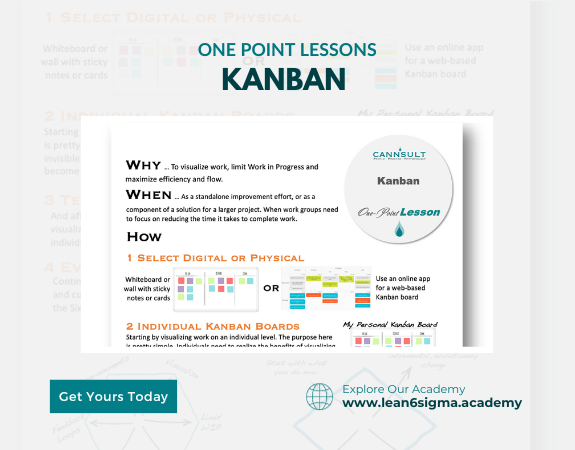Kanban
Minimize inventory
Resource allocation done right!
Improve workflow
Reduce inefficiencies
Improved efficiency and productivity
Kanban is a visual workflow management system that helps control and optimize processes by signaling when and what work to do, ensuring efficient production and minimizing waste.
Description:
Kanban, which means "visual card" or "signboard" in Japanese, is a system developed by Toyota to improve manufacturing efficiency. It's now widely used in various industries beyond manufacturing to optimize workflows and processes.
Kanban Principles:
Visualize Workflow: Create a visual representation of your workflow, breaking it into stages or steps. Each stage is represented by a column on a Kanban board.
Limit Work in Progress (WIP): Assign WIP limits to each column on the Kanban board. These limits restrict the number of tasks or items that can be in progress at any given time, preventing overloading and bottlenecks.
Use Kanban Cards: Each task or item is represented by a Kanban card, which contains essential information like task details, priority, and who is responsible for it.
Pull System: Work is pulled from one column to the next based on available capacity and demand. When a column has available space (within its WIP limit), the next task can be pulled into it.
Continuous Improvement: Regularly review the Kanban board to identify bottlenecks, inefficiencies, and areas for improvement. Adjust the process accordingly to optimize workflow.
Steps to Implement Kanban:
Map the Workflow: Identify the stages or steps in your process and create a visual representation of it. This can be done on a physical board or using digital tools.
Define WIP Limits: Set limits for each column on the Kanban board. These limits prevent overburdening and help maintain a smooth workflow.
Create Kanban Cards: For each task or item in the process, create a Kanban card with relevant details.
Initiate Work: Start with the first task in the "To Do" column. As capacity becomes available in subsequent columns, pull tasks into them.
Monitor and Optimize: Continuously review the Kanban board, identify bottlenecks or issues, and make necessary adjustments to improve efficiency.
Benefits:
Improved workflow visibility
Reduced bottlenecks and delays
Enhanced productivity and efficiency
Better resource allocation
Flexible and adaptable process management
Key Takeaway:
Kanban is a visual workflow management system that optimizes processes by limiting work in progress, promoting a pull system, and encouraging continuous improvement. It enhances efficiency and helps organizations respond to changing demands effectively.

0 Reviews
Riaan is a dynamic leader, coach, facilitator, Lean Six Sigma Master Black Belt with over 20 years of hands-on experience driving business results. Riaan is highly skilled and has worked across diverse industries internationally. With a degree in Chemical Engineering, Riaan started in the major breweries and bakeries in South Africa and was so dedicated to his work that he was often known to take his work home with him.
